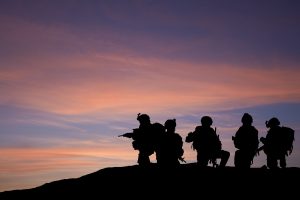The security situation in Afghanistan has been deteriorating in the wake of U.S. President Joe Biden’s announcement of a full U.S. troop withdrawal by September 11. The unstable security situation in Afghanistan has reached the Uzbek and Tajik borders in recent weeks, with the fall of several northern Afghan districts to the Taliban.
On July 3, more than 300 Afghan armed forces crossed into Tajikistan from Afghanistan’s Badakhshan province following clashes with the Taliban, the largest single-day retreat from Afghanistan in recent months. Earlier, on June 22, Taliban captured the Sherhan Bandar border post, the main trading and transit hub between Tajikistan and its neighbors to the south, Pakistan and Iran. As a result, 134 Afghans — mostly government troops and some local officials — crossed into Tajikistan. In both cases, Tajik authorities allowed the Afghans to cross and stay in Tajikistan.
The clashes near the Uzbek and Afghan border are milder, judging by the number of people that have so far attempted to cross the border, but it is important to note that the Uzbek border is much shorter compared to Afghanistan’s border with Tajikistan. The Hayraton border post, a trade and transit hub between Afghanistan and Uzbekistan, is arguably the Taliban’s next goal as Afghanistan armed forces created a 5 kilometer buffer zone around the post. An Afghanistan army commander reported deploying hundreds of troops to protect the Hayraton border by “creating a security belt.”
Between June 23 and June 28, there were at least three attempts by Afghan forces to cross the Uzbek border. In each case, Uzbek troops were able to interdict the individuals and return them to Afghanistan.
A day after the first group of Afghan troops crossed the Uzbek border, on June 24, Uzbekistan started a large-scale military exercise to check the military readiness of its ground and air defense troops in the military district along the border with Afghanistan and a neighboring military district area near Tashkent. Tajik armed forces were put on an alert on June 26, but their deployment for the reinforcement of border troops was deemed unnecessary.
It is unclear whether the stark differences in the official stances of Uzbekistan and Tajikistan toward the situation in Afghanistan could be the reason for these different responses. While Uzbekistan has recognized the deteriorating security situation in Afghanistan, it condemned the attempts to cross its border and the Ministry of Foreign Affairs of Uzbekistan described them as illegal acts that will be actively interceded and violators “severely punished.”
Meanwhile, Tajikistan’s State Committee for National Security, which operates the border service, said in official statements following two border incidents (June 21 and July 3) that guided by the principles of humanism and goodwill, they allowed retreating Afghan military service members into the territory of Tajikistan. The governor of Tajikistan’s Gorno-Badakhshan district, which shares a long mountainous border with Afghanistan, announced that it will be ready to accept up to 10,000 refugees.
While Tashkent chose to capture and return all Afghan citizens who attempted to enter Uzbekistan, Dushanbe allowed them to enter and stay. One of Tajikistan’s provinces announced that it would treat Afghans entering Tajikistan as refugees, but in Uzbekistan they will be reported as violators of national borders. Tashkent sees the events as a destabilizing factor for Uzbekistan and qualifies the clashes between the Taliban and the Afghan armed forces as an internal matter for Afghanistan. Tajikistan appears to be treating the situation as a humanitarian matter, while Uzbekistan views it as a purely security matter.
While the clashes on the Uzbek border are not as severe as the events on the border with Tajikistan, Uzbekistan chose to reinforce its side of the border with ground and air force elements in addition to permanently present border guards. The Afghan side of the border with Uzbekistan is heavily reinforced as well. There are no similar activities taking place on the Tajik side. In fact, the only body that is presently involved on the Tajik side is the Border Troops.
Crossroads Asia | Security | Central Asia
Retreating Afghan Forces Cross Into Central Asia
As the Taliban capture districts in Afghanistan’s north, Uzbek and Tajik responses to fleeing Afghan forces have varied.

































